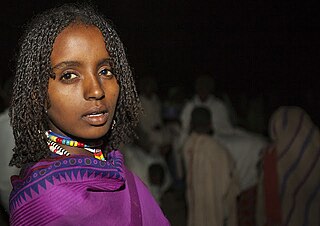
The Oromo people are a Cushitic ethnic group native to the Oromia region of Ethiopia and parts of Northern Kenya. They speak the Oromo language, which is part of the Cushitic branch of the Afroasiatic language family. They are one of the largest ethnic groups in Ethiopia. According to the last Ethiopian census of 2007, the Oromo numbered 25,488,344 people or 34.5% of the Ethiopian population. Recent estimates have the Oromo comprising 41,000,000 people, or 35.8% of the total Ethiopian population estimated at 116,000,000.

Oromia is a regional state in Ethiopia and the homeland of the Oromo people. The capital of Oromia is Addis Ababa, also called Finfinne.

Greater Somalia sometimes called Greater Somaliland is the geographical location comprising the regions in the Horn of Africa in which ethnic Somalis live and have historically inhabited.
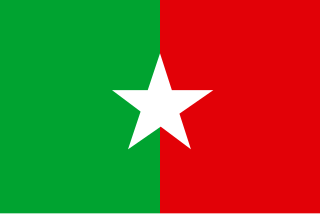
The Western Somali Liberation Front was an Ogaden separatist group fighting in eastern Ethiopia to liberate the Ogaden region from Ethiopian control. It played a major role in the Ogaden War of 1977–78, assisting the invading Somali Army.
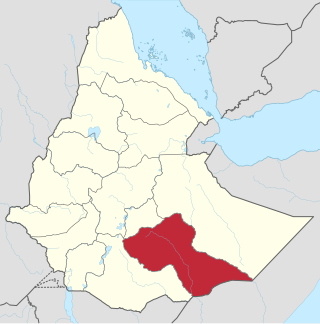
Bale, also known as Bali, is the name of two former polities located in the southeastern part of modern Ethiopia.

General Waqo Gutu Usu was an Ethiopian revolutionary and leader of one of the earlier Oromo resistance fighter movements; the Bale Revolt, which in the 1960s had fought against the feudalistic system in place in the Ethiopian Empire. He was elected chairman of the United Liberation Forces of Oromia in 2000. In 2006, Gutu died in a Nairobi hospital, survived by 20 sons and 17 daughters.

The Oromo Liberation Front is an Oromo nationalist political party formed in 1973 to promote self-determination for the Oromo people inhabiting today's Oromia Region and Oromia Zone in the Amhara Region of Ethiopia. The OLF has offices in Addis Ababa, Washington, D.C., and Berlin, from which it operates radio stations that broadcast in Amharic and Oromo.
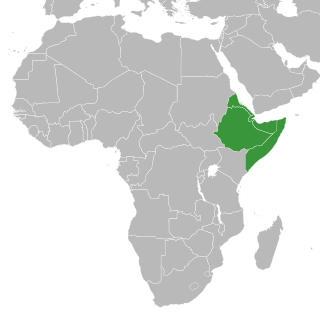
Conflicts in the Horn of Africa have been occurring since the 17th century BCE. The Horn of Africa includes the nations of Djibouti, Eritrea, Ethiopia, and Somalia.
Filtu is the capital city of '"Liben Zone"' Filtu is a town in southern Ethiopia. Located in the Liben Zone of the Somali Region, it has a latitude and longitude of 4°58′N40°23′E with an elevation of 1252 meters above sea level. It is the administrative center of Filtu woreda. During the Italian occupation, a road 115 kilometers in length to Negele Boran was maintained but not paved.
The Argobba are an ethnic group inhabiting Ethiopia. A Muslim community, they are spread out through isolated village networks and towns in the north-eastern and eastern parts of the country. Group members have typically been astute traders and merchants, and have adjusted to the economic trends in their area. These factors have led to a decline in usage of the Argobba language. Argobba are considered endangered today due to exogamy and destitution as well as ethnic cleansing by the Abyssinian state over the centuries.

The Harari people are a Semitic-speaking ethnic group which inhabits the Horn of Africa. Members of this ethnic group traditionally reside in the walled city of Harar, simply called Gēy "the City" in Harari, situated in the Harari Region of eastern Ethiopia. They speak the Harari language, a member of the South Ethiopic grouping within the Semitic subfamily of the Afroasiatic languages.

Arsi Oromo is an ethnic Oromo branch, inhabiting the Arsi, West Arsi and Bale Zones of the Oromia Region of Ethiopia, as well as in the Adami Tullu and Jido Kombolcha woreda of East Shewa Zone.The Arsi are made up of the Sikkoo-Mandoo branch of Barento Oromo. The Arsi in all zones speaks Oromo share the same culture, traditions and identity with other subgroup Oromo.

Ethiopian nationalism, also referred to as Ethiopianism or Ethiopianness, according to its proponents, asserts that Ethiopians are a single nation, and promotes the social equality of all component ethnic groups. Ethiopian people as a whole regardless of ethnicity constitute sovereignty as one polity. Ethiopian nationalism is a type of civic nationalism in that it is multi-ethnic in nature, and promotes multiculturalism.
The Sultanate of Bale was a Somali Muslim sultanate founded in the Bale Mountains of the southern Ethiopian Highlands and Horn of Africa. It corresponds roughly to the modern Bale Zone of the Oromia Region in Ethiopia.

The Oromo conflict is a protracted conflict between the Oromo Liberation Front (OLF) and the Ethiopian government. The Oromo Liberation Front formed to fight the Ethiopian Empire to liberate the Oromo people and establish an independent state of Oromia. The conflict began in 1973, when Oromo nationalists established the OLF and its armed wing, the Oromo Liberation Army (OLA). These groups formed in response to prejudice against the Oromo people during the Haile Selassie and Derg era, when their language was banned from public administration, courts, church and schools, and the stereotype of Oromo people as a hindrance to expanding Ethiopian national identity.
A neftenya was the name given to Emperor Menelik II's warriors, who were primarily of Shewan Amhara origin, that collected customs and taxes for the Imperial Ethiopian government. In its literal meaning, neftenya, referred to riflemen in the Imperial Ethiopian Army who were known to have settled in Ethiopia's peripheral regions, including parts of present-day Oromia Region, the SNNPR Region, Gambela Region and the Benishangul-Gumuz Region from the late 19th century onwards. The origin of this term lies from the fact that these soldiers, i.e. "neftenya", were granted land on these newly conquered territories, including the services of the indigenous people on these lands, as rewards for their services.
The 1995 Ethiopian Federal Constitution formalizes an ethnic federalism law aimed at undermining long-standing ethnic imperial rule, reducing ethnic tensions, promoting regional autonomy, and upholding unqualified rights to self-determination and secession in a state with more than 80 different ethnic groups. But the constitution is divisive, both among Ethiopian nationalists who believe it undermines centralized authority and fuels interethnic conflict, and among ethnic federalists who fear that the development of its vague components could lead to authoritarian centralization or even the maintenance of minority ethnic hegemony. Parliamentary elections since 1995 have taken place every five years since enactment. All but one of these have resulted in government by members of the Ethiopian People's Revolutionary Democratic Front (EPRDF) political coalition, under three prime ministers. The EPRDF was under the effective control of the Tigray People's Liberation Front (TPLF), which represents a small ethnic minority. In 2019 the EPRDF, under Abiy, was dissolved and he inaugurated the pan-ethnic Prosperity Party which won the 2021 Ethiopian Election, returning him as prime minister. But both political entities were different kinds of responses to the ongoing tension between constitutional ethnic federalism and the Ethiopian state's authority. Over the same period, and all administrations, a range of major conflicts with ethnic roots have occurred or continued, and the press and availability of information have been controlled. There has also been dramatic economic growth and liberalization, which has itself been attributed to, and used to justify, authoritarian state policy.
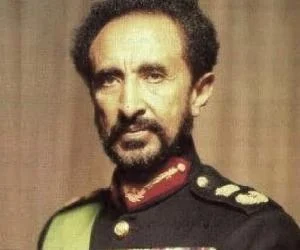
Opposition to Haile Selassie relied largely of internal administration of his country. While Haile Selassie made attempt to modernize the country and brought to global power since Italy's occupation in 1936–41, the later administration met with negative public attitude especially among educated people in universities and peasants.
The 1963–1965 Ogaden rebellion was an uprising and insurgency by the Somali population of the Ogaden region in Ethiopia against attempts at taxation and cultural assimilation by the government of Emperor Haile Selassie. Somali leader Mukhtal Dahir, previously a founder of the Somali Youth League, led the insurgency after demands for self-determination by Somali leaders in the region were consistently ignored. The rebellion, which at its peak controlled nearly 70% of the Ogaden region, originated from long-standing tensions between the Somali and Ethiopian populations, exacerbated by harsh military crackdowns and punitive expeditions by Ethiopian forces.

Anti-Oromo sentiment or Oromophobia, is opposition, hatred, discrimination or prejudice against the Oromo ethnic group. Anti-Oromo sentiment has root its accusations during the rule of Ethiopian Empire, particularly in the reign of Emperor Menelik II in 1880s. Oromo nationalists argued that the Oromo have been subjugated and oppressed by dominant Amhara feudal rulers and its oppression persisted throughout 20th century. Under Haile Selassie, Oromos have been targeted to persecutions after long wave of resistance. Many Oromo revolutionaries like Mamo Mazamir, Haile Mariam Gamada and General Tadesse Birru faced execution by Selassie government and then the Derg regimes.













